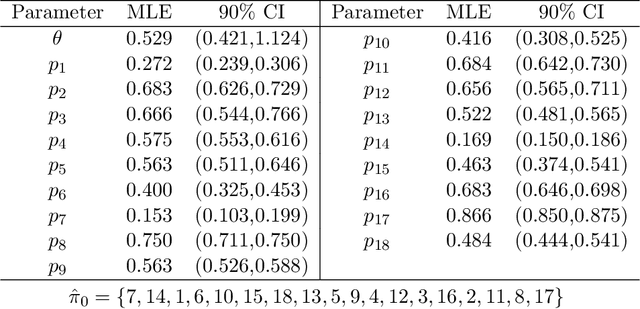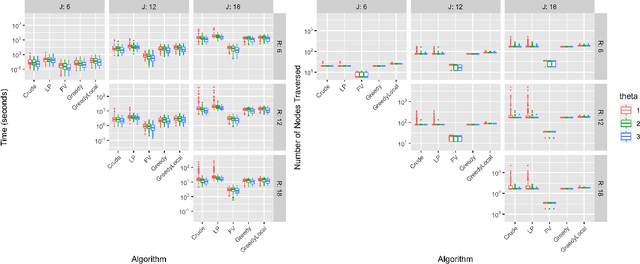Elena A. Erosheva
A Unified Statistical Learning Model for Rankings and Scores with Application to Grant Panel Review
Jan 07, 2022



Abstract:Rankings and scores are two common data types used by judges to express preferences and/or perceptions of quality in a collection of objects. Numerous models exist to study data of each type separately, but no unified statistical model captures both data types simultaneously without first performing data conversion. We propose the Mallows-Binomial model to close this gap, which combines a Mallows' $\phi$ ranking model with Binomial score models through shared parameters that quantify object quality, a consensus ranking, and the level of consensus between judges. We propose an efficient tree-search algorithm to calculate the exact MLE of model parameters, study statistical properties of the model both analytically and through simulation, and apply our model to real data from an instance of grant panel review that collected both scores and partial rankings. Furthermore, we demonstrate how model outputs can be used to rank objects with confidence. The proposed model is shown to sensibly combine information from both scores and rankings to quantify object quality and measure consensus with appropriate levels of statistical uncertainty.
On the use of bootstrap with variational inference: Theory, interpretation, and a two-sample test example
Apr 18, 2018



Abstract:Variational inference is a general approach for approximating complex density functions, such as those arising in latent variable models, popular in machine learning. It has been applied to approximate the maximum likelihood estimator and to carry out Bayesian inference, however, quantification of uncertainty with variational inference remains challenging from both theoretical and practical perspectives. This paper is concerned with developing uncertainty measures for variational inference by using bootstrap procedures. We first develop two general bootstrap approaches for assessing the uncertainty of a variational estimate and the study the underlying bootstrap theory in both fixed- and increasing-dimension settings. We then use the bootstrap approach and our theoretical results in the context of mixed membership modeling with multivariate binary data on functional disability from the National Long Term Care Survey. We carry out a two-sample approach to test for changes in the repeated measures of functional disability for the subset of individuals present in 1989 and 1994 waves.
 Add to Chrome
Add to Chrome Add to Firefox
Add to Firefox Add to Edge
Add to Edge